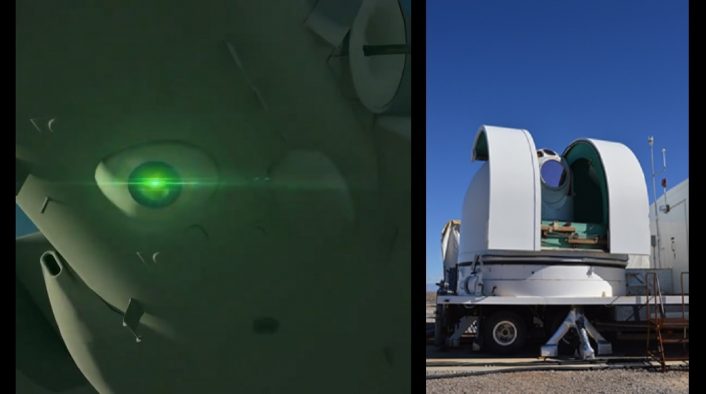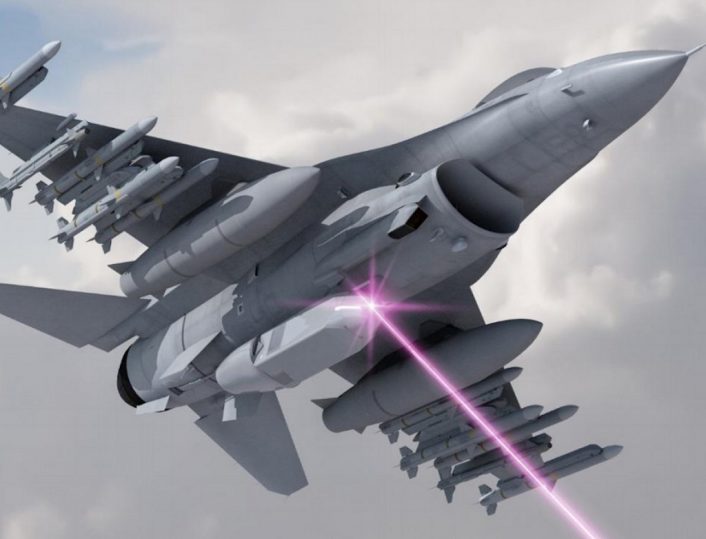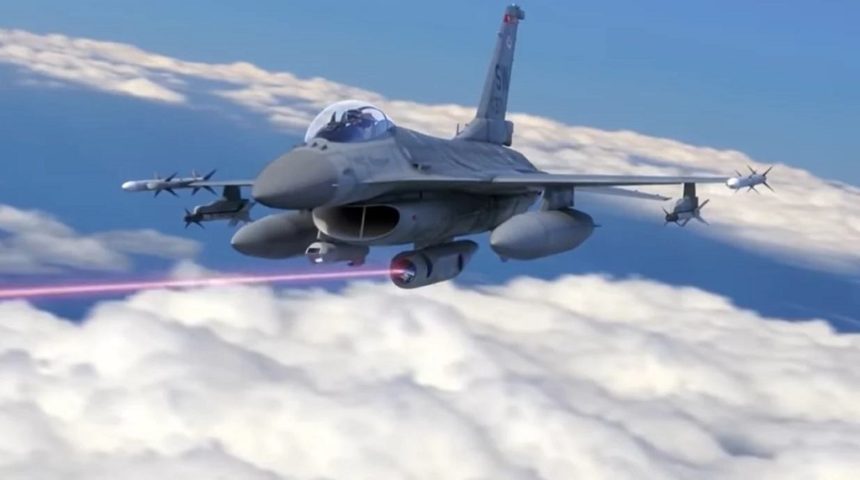The system, installed both in a pod and in a fairing, should be part of the Self-protect High Energy Laser Demonstrator program.
Lockheed Martin recently released a video showing defensive laser systems that are being developed for aircraft applications. In the video we can see two laser systems: a pod mounted under the centerline hardpoint of an F-16 and a fixed system mounted in a fairing under and AC-130’s fuselage. According to the company’s website, the systems are based on fiber laser technology, a type of laser which uses as active gain medium an optical fiber, as opposed to solid-state laser which uses a glass or crystalline solid material.
The systems showcased are part of a broader effort to protect air, sea and ground assets and give them the capability to “be able to neutralize a threat at the speed of a lightning strike, the precision of a surgical scalpel, with the magazine to be able to deal with a swarm and with the scalable effect to be able to address that threat providing an effect all the way the one end from simply deterring it for a short period of time all the way up to completely neutralizing and defeating that threat”, as said in the video by Daniel Miller, Senior Fellow at Skunk Works.
We’re engineering battlefield-ready laser systems that will enable users to neutralize threats at the speed of a lightning strike.
Watch below.
— Lockheed Martin (@LockheedMartin) August 11, 2020
The name of the laser system has not been mentioned, however, in 2017, the Air Force Research Lab (AFRL) awarded Lockheed Martin a contract for the design, development and production of a high power fiber laser, as part of the Self-protect High Energy Laser Demonstrator (SHiELD) program to protect aircraft from air-to-air and surface-to-air missiles.
In the press release for the contract award, SHiELD is mentioned as including three subsystems:
- SHiELD Turret Research in Aero Effects (STRAFE): the beam control system, which will direct the laser onto the target;
- Laser Pod Research & Development (LPRD): the pod mounted on the tactical fighter jet, which will power and cool the laser;
- Laser Advancements for Next-generation Compact Environments (LANCE): the high energy laser itself, which can be trained on adversary targets to disable them.

According to the available info, Lockheed Martin is in charge of LANCE, while Northrop Grumman and Boeing are in charge of STRAFE and LPRD, respectively. The power of the laser has not been disclosed, however LM officials have been quoted as saying that it should be in the “tens of kilowatts” range. For instance, in 2019 the AFRL tested the Demonstrator Laser Weapon System (DLWS) as ground-based test surrogate for SHiELD. The system, which should have a similar power range, was able to shoot down multiple air launched missiles in flight.
Some key features highlighted in a public AFRL presentation are:
- Self-protection against incoming threats;
- Engagement of multiple targets quickly, over a wide field of regard, with a deep magazine;
- Compensation for laser beam-spoiling transonic turbulence effects;
- Mature laser weapon system with a compact and rugged exterior;
- Applicable to a wide variety of aircraft types.
LM also developed for the U.S. Army a 60 kW-class beam combined fiber laser system, which was able to produce a single beam of 58 kW, for the High Energy Laser Tactical Vehicle Demonstrator (HEL TVD), part of the Indirect Fire Protection Capability (IFPC) Increment 2 Block 2 (IFPC 2-I Blk 2) program for a new Counter-Rocket, Artillery, Mortar, Unmanned Aerial Systems capability (C-RAM/UAS). While development is completed, the U.S. Army is acquiring the Iron Dome system as interim IFPC and used an An-225 Mriya to deliver to Israel the Oshkosh HEMMT trucks on which the system will be installed.
The SHiELD pod was to be tested in 2021, however DefenseNews reported that the test will be delayed to 2023 due to technical challenges and complications that followed the COVID-19 pandemic, according to Jeff Heggemeier, SHiELD program manager for AFRL. Adding to this, then Under Secretary of Defense for Research and Engineering Mike Griffin was quoted as saying: “I’m extremely skeptical that we can put a large laser on an aircraft and use it to shoot down an adversary missile even from very close.” It is not completely clear if Griffin was referring to a specific system, which most probably could be some anti-ballistic missile defense system, however this raised some concerns.

A rendering from 2018 showing the defensive laser pod used by an F-16V. (Image: Lockheed Martin)
Heggemeier defended the continuation of the SHiELD development: “I think it’s important for us to first remember what the whole point of SHiELD is. The whole point of SHiELD is not an acquisition program where we’re turning out hundreds or tens of these laser systems for operational use. What we’re trying to do with SHiELD is exactly answer those questions of: ‘Is laser technology mature enough to go on an airborne platform? Have we solved enough of those technical challenges that this is now a feasible thing?’ Because there is that concern.”
He also added: “You’re not talking about these really, really long ranges. You’re talking about a shorter range and different targets just to protect yourself or your wingman. Missile defense can mean a lot of things. Some of those missile defense missions are very, very hard, and some of them aren’t quite so hard.”
As of now, we don’t know officially on which aircraft the AFRL will test the SHiELD pod, however AirForceMagazine reported last year that the defensive laser system may be demonstrated on the F-15, while Lockheed Martin showed the pod on the F-16C and C-130J-series aircraft. An older rendering showed the pod also on the F-16V Block70.









